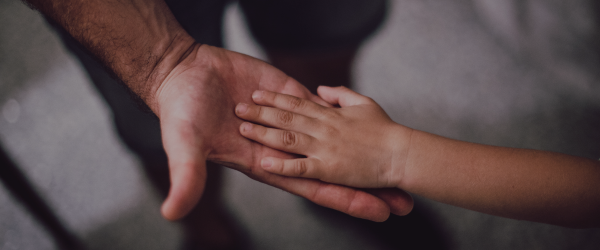Identifying and Reporting Mistreatment of Children
By: Christy A. Zlatkus
In the last year, at least 1 in 7 children experienced abuse or neglect, according to the CDC.
---------
April is National Child Abuse Prevention Month, a time to raise awareness about child mistreatment, highlight the importance of creating systems and programs that support children and families, and recognize that every person in a community plays a role in preventing and identifying child abuse and neglect. To learn about what kinds of signs and symptoms may indicate a child you know is being mistreated, and what to do if you see abuse, neglect, or mistreatment, read on.
What is child abuse and neglect?
According to the Code of Maryland Regulations (COMAR), child abuse and neglect includes the following situations where a child’s health or welfare is “harmed or at substantial risk of being harmed”: visible or invisible physical injury; failure to administer proper care or attention; leaving a child inappropriately unattended; sexual molestation or exploitation (regardless of whether or not the child is injured); and/or “identifiable and substantial impairment of a child’s mental or psychological ability to function.”
Who is most at risk for abuse and/or neglect?
There a number of factors that can affect a child’s risk for mistreatment - some of them are related to a child’s age, health, and physical, social, emotional, and mental development, while others are associated with a child’s family makeup and their parent(s)/caregiver(s).
Specifically, Children whose caregivers suffer from mental health conditions and substance use disorders, as well as those whose parents are adolescents, may be more likely to experience abuse. Adults who abuse their partners or have previously exhibited domestic violence may be more likely to abuse children, as well, so it’s essential that you document any instances of domestic abuse to the appropriate authorities, and document the incident(s) as best as you can. If you are in the midst of a divorce or child custody matter and your co-parent has abused you or a child in the past, be sure to present any documentation to the court.
Identifying possible abuse or neglect
Some children may display nearly all of the signs, while others won’t show any. However, suspicion of abuse is enough to warrant making a report to the appropriate authorities for further investigation, especially if you see multiple and/or recurring signs of possible abuse, neglect, or mistreatment of a child you know.
Signs of abuse
Children who exhibit the following signs may be experiencing abuse at home and/or by a trusted adult:
- Behavioral Changes, such as changes in eating, drinking, and sleeping habits, and/or new problems with school performance and attendance
- Engaging in risky behavior, such as drinking alcohol, taking drugs, carrying a weapon, or engaging in inappropriate or high-risk sexual behaviors
- Unexplained injuries, such as bruises, burns, broken bones, or black eyes - often, they will be reluctant to explain where the injuries came from, or may provide an explanation that doesn’t seem to make sense
- Changes in personal hygiene and care habits
- Apprehension about going home or going to another person’s home
- New phobias, fears, and/or anxiety
- Nightmares and/or trouble sleeping
- Reverting to behaviors from early childhood, such as wetting the bed or sucking their thumbs
Signs of Neglect
Children who are experiencing neglect at home and/or by a trusted adult may:
- Be frequently absent from school
- Have a dirty appearance, body odor, and/or other general lack of hygienic care
- Not have appropriate seasonal clothing (e.g., not having a coat or other warm weather gear during the winter, or wearing long sleeves and long pants during the summer)
- Be frequently hungry, and appear very thin or underweight
- Beg for food or money, or steal these items
- Drink, take drugs, or engage in other risky behaviors
Neglect and abuse are not mutually exclusive, as many children experience both at the same time. The lists above are not a comprehensive list of signs and symptoms of mistreatment. For more resources about identifying abuse and neglect, keep scrolling.
What to do if you see or suspect a child is being abused or neglected
If you or a child you know is in danger of imminent harm, call 911. To report possible abuse or neglect, if you see any of the above signs/symptoms, or suspect mistreatment for any reason, contact Maryland Child Protective Services, the DC Child and Family Services Agency, or other local child protective services agency, local law enforcement, or reach out to the National Child Abuse Hotline 24 hours a day, 7 days a week by visiting their website or calling or texting 1-800-4-A-CHILD (1-800-422-4453).
It’s important to note that reporting possible abuse does not constitute an accusation, but will ensure that the child and their family receive necessary services and intervention to keep everyone safe. In Maryland, you have the right to make an anonymous report, and reports of possible abuse are immune from civil liability (unless the report is made maliciously, or purposefully erroneously).
Additional Resources
- Child Welfare Information Gateway, Factsheet: What is Child Abuse and Neglect? Recognizing the Signs and Symptoms
- Maryland Department of Human Services, Child Protective Services, Signs of Neglect or Abuse
If you're navigating a divorce, child custody, or domestic violence matter that involves confirmed or suspected child abuse, contact a qualified family law attorney immediately for guidance on keeping your kids safe. For compassionate counsel, call (301) 388-5528 or email us at hello@zfamilylaw.com.

